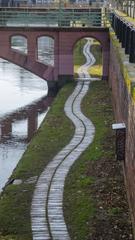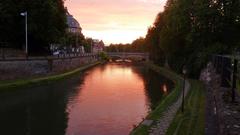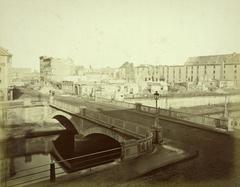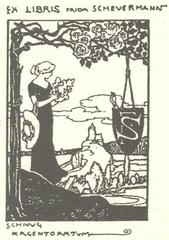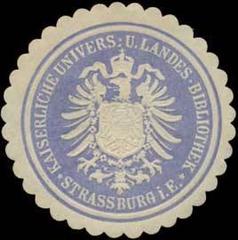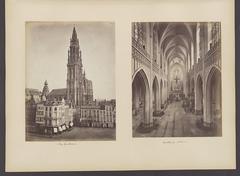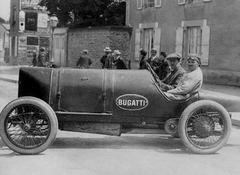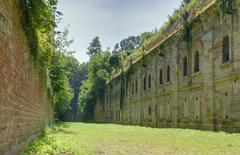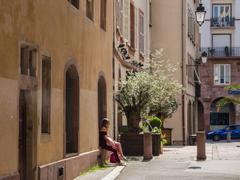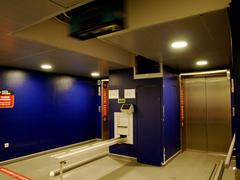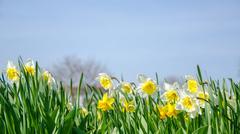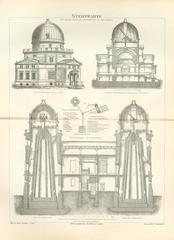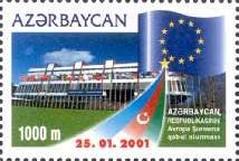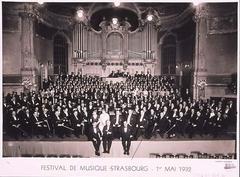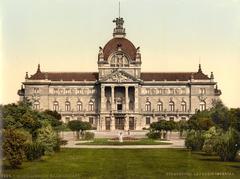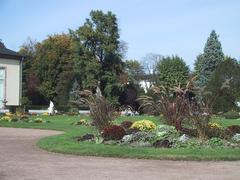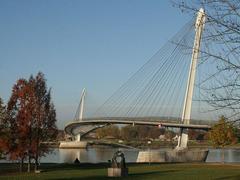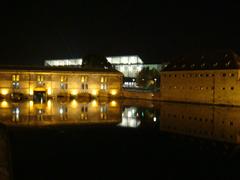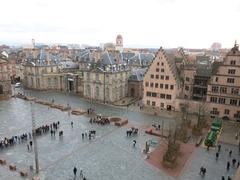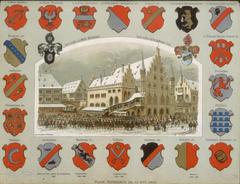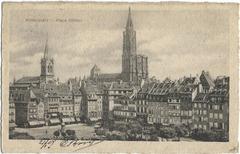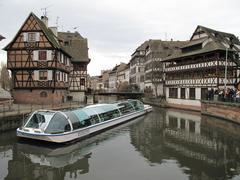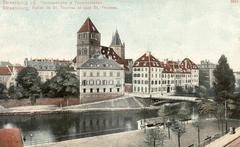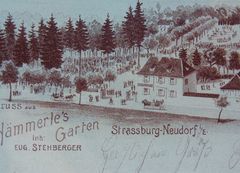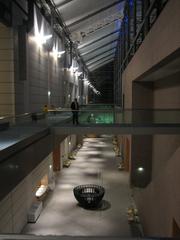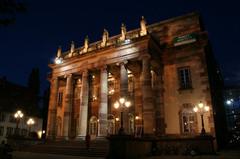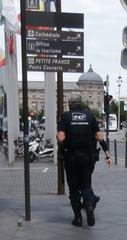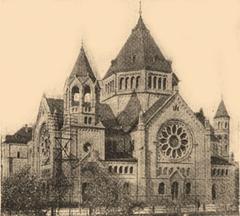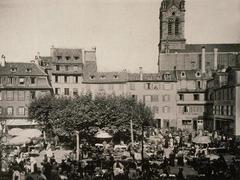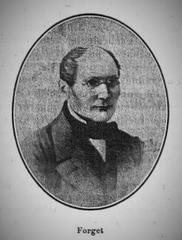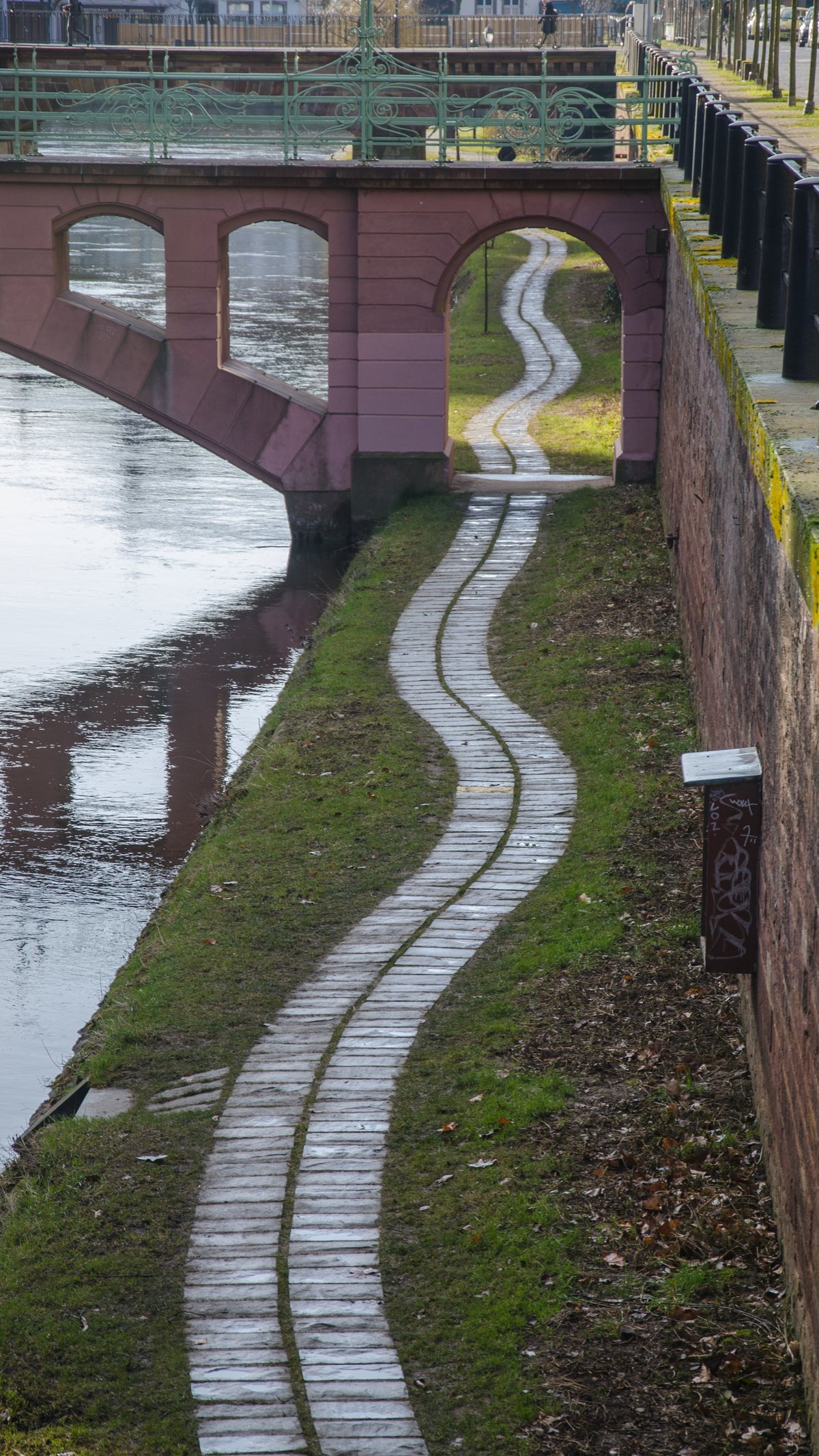
Complete Guide to Visiting Canal du Faux-Rempart, Strasbourg: Hours, Tickets, and Top Attractions
Date: 14/06/2025
Introduction
The Canal du Faux-Rempart is a captivating testament to Strasbourg’s layered history, marrying medieval fortifications with modern urban life. Originally built in the 13th century as a defensive moat encircling the Grande Île, this “false rampart” has evolved into a picturesque public promenade that weaves through the heart of the city. Today, visitors can stroll or cycle along its tree-lined banks, explore nearby UNESCO World Heritage sites, or embark on scenic boat tours offering striking perspectives of Strasbourg’s iconic architecture (Ostrich Trails, Archi-Wiki).
This detailed guide covers everything you need to plan your visit: from the canal’s historical evolution and architectural highlights, to practical information like visiting hours, ticketing, accessibility, safety, and seasonal events. Whether you’re a history buff, a photographer, or simply seeking a tranquil escape in the city, the Canal du Faux-Rempart is an essential Strasbourg experience (Evendo, The Independent).
Table of Contents
- Introduction
- Medieval Origins & Strategic Purpose
- Evolution Through Modernity
- Urban Transformation & Heritage
- Visiting Hours & Ticketing
- Accessibility & Getting There
- Bridges, Quays, and Urban Greenery
- Top Nearby Attractions & Events
- Scenic Boat Tours
- Strolling, Cycling & Photography
- Seasonal Highlights
- Safety Tips
- Practical Visitor Advice
- Frequently Asked Questions
- Conclusion & Final Tips
- Sources
Medieval Origins & Strategic Purpose
Established in the 13th century, the Canal du Faux-Rempart was conceived as a defensive moat fortifying Strasbourg’s northern and eastern perimeters. Its fortified walls and towers—hence the name “false rampart”—doubled the city’s protection against invaders and managed the flow of the River Ill (Ostrich Trails). Over time, the canal also facilitated trade, serving as a navigable route for transporting goods.
Evolution Through Modernity
The 16th and 17th centuries saw significant upgrades to the city’s defenses, with the canal remaining central to military strategy. The nearby Barrage Vauban (Vauban Dam), built in the late 17th century, allowed the city to flood surrounding areas in times of siege (Vellut Blog). As military threats faded in the 19th century, Strasbourg’s leaders demolished the ramparts, transforming the canal into a navigation channel and developing its banks into public promenades (Archi-Wiki).
Urban Transformation & Heritage
Today, the Canal du Faux-Rempart is a tranquil urban artery that encircles the Grande Île, the historic core of Strasbourg and a UNESCO World Heritage Site. Its path passes by the city’s most celebrated landmarks, including the Cathédrale Notre-Dame, Place Kléber, and the enchanting Petite France district (The Independent). The area’s bridges—like Pont National and Passerelle des Juifs—offer scenic vantage points and are illuminated beautifully at night (fr.wikipedia).
The canal’s revitalized banks, dotted with benches and green landscaping, invite both locals and tourists to linger, relax, and take in the views (UNA City).
Visiting Hours & Ticketing
Canal Access:
- The canal banks are open to the public all year, 24/7, free of charge.
Boat Tours:
- Operate seasonally from April to October, typically from 10:00 AM to 6:00 PM.
- Tickets required for boat tours, ranging from €10 to €20 for adults depending on the tour and provider.
- Tickets are available online or at kiosks near Place du Marché-aux-Charbonniers and Barrage Vauban.
Private Navigation:
- Private boats are generally not allowed, ensuring the canal’s peaceful character (canalplan.uk).
Accessibility & Getting There
The canal is centrally located within walking distance from major landmarks like Strasbourg Cathedral and Petite France.
- Public Transport: Tram Lines A and D stop at ‘Lycée Couffignal,’ a short walk from the canal.
- Cycling: Strasbourg’s extensive bike lanes and rental stations make cycling to the canal easy.
- Parking: Public lots are available nearby, but may fill up during peak seasons.
- Wheelchair Accessibility: Most promenades are accessible, though some historic bridges may have steps or uneven surfaces (Evendo).
Bridges, Quays, and Urban Greenery
The canal is crossed by 13 bridges and two pedestrian footbridges, ranging from medieval stone to contemporary ironwork (wikimonde). Landscaped quays and promenades, especially on the right bank, provide shaded walkways and spots for rest. In spring and summer, these areas are alive with flowers and greenery.
Top Nearby Attractions & Events
- Petite France: Famed for its half-timbered houses and winding waterways.
- Strasbourg Cathedral: Gothic masterpiece just minutes from the canal.
- Barrage Vauban & Ponts Couverts: Historic bridges with panoramic viewpoints.
- Place Kléber & Palais Rohan: Cultural landmarks nearby.
- Seasonal events: Art festivals, open-air concerts, and Christmas market illuminations are regular features (Vellut Blog).
Scenic Boat Tours
Boat tours around the Grande Île and through Petite France depart regularly from April to October.
- Duration: 45 minutes to 1 hour
- Languages: Multi-lingual commentary
- Booking: Online or at departure kiosks; advance booking recommended in high season (Evendo).
Strolling, Cycling & Photography
Walking and cycling along the canal reveal ever-changing views of Strasbourg’s historic facades and bridges.
- Cycling: Dedicated bike lanes and flat terrain make it accessible for all ages (Evendo).
- Photography: The golden hour—shortly after sunrise or before sunset—offers magical reflections and soft light, especially from bridges like Pont de Saverne and Pont Kuss.
Seasonal Highlights
- Spring/Summer: Banks bloom with flowers; outdoor cafes and boat tours abound.
- Autumn: Golden foliage creates a vibrant backdrop.
- Winter: The canal area glows with festive lights during Strasbourg’s famous Christmas market (Evendo).
Safety Tips
While the area is generally safe and well-patrolled, visitors should:
- Stay on designated paths, especially near the water’s edge.
- Supervise children closely.
- Be cautious during wet or icy conditions.
- In emergencies, use the city’s emergency numbers; local authorities are quick to respond (DNA).
Practical Visitor Advice
- Best times to visit: Early morning or late afternoon for tranquility and great photos.
- What to bring: Comfortable shoes, camera, water bottle, and weather-appropriate clothing.
- Etiquette: Respect local customs and keep noise to a minimum.
- Booking tips: Reserve boat tours in advance during holidays or weekends.
Frequently Asked Questions (FAQ)
Q: What are the Canal du Faux-Rempart visiting hours?
A: The canal is accessible year-round, 24/7. Boat tours operate April–October, 10:00 AM–6:00 PM.
Q: Are tickets required?
A: Walking and cycling are free; boat tours require tickets.
Q: Is the canal wheelchair accessible?
A: Most paths are accessible, though some bridges may have steps.
Q: Are private boats permitted?
A: Generally not, to preserve tranquility and safety.
Q: What major sites are nearby?
A: Strasbourg Cathedral, Petite France, Barrage Vauban, Place Kléber, and more.
Conclusion & Final Tips
The Canal du Faux-Rempart is a living monument to Strasbourg’s history, architecture, and community spirit. Its peaceful promenades, scenic boat tours, and proximity to world-class landmarks make it a highlight for every visitor. For the best experience, consult official tourism resources, book boat tickets in advance, and download the Audiala app for curated walking tours and insider tips (Visit Strasbourg, Audiala).
Whether you’re planning a leisurely stroll, a family outing, or a cultural adventure, the Canal du Faux-Rempart promises a memorable journey through the heart of Strasbourg.
Sources and Further Reading
- Ostrich Trails, 2025, ‘Strasbourg Walking Tour’
- Vellut Blog, 2019, ‘Petite France in Strasbourg: Barrage Vauban, Ponts Couverts’
- UNA City, 2025, ‘Development of Banks Faux Rempart Ditch’
- Archi-Wiki, 2025, ‘Canal des Faux Remparts (Strasbourg)’
- Wikipedia, 2025, ‘Faux-Rempart Canal’
- The Independent, 2019, ‘Strasbourg Travel Guide’
- Trek Zone, 2025, ‘Canal du Faux-Rempart Strasbourg’
- Evendo, 2025, ‘Canal du Faux-Rempart’
- Visit Strasbourg, 2025, Official Tourism Website
- DNA, 2025, ‘Chute Mortelle dans le Canal’
- Audiala, 2025, Mobile App for Curated Walking Tours
